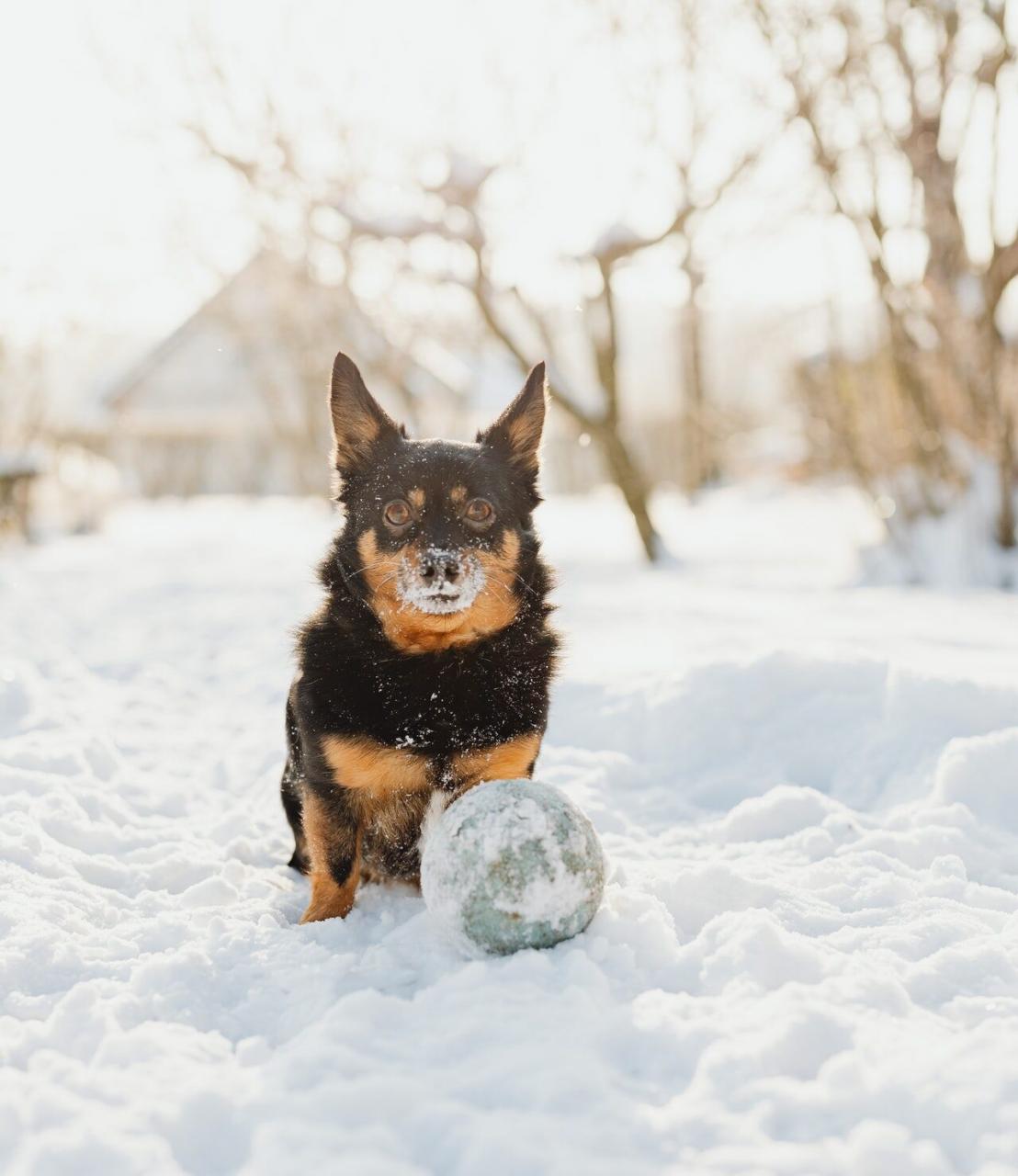
Sponsored by Royal Canin
There seem to be two types of dogs: those that see the first few flakes of snow and decide that the sofa is a good spot to sleep away winter, and those that can’t wait for that fun white stuff to come so they can go bounding and rolling around in it. No matter what type of dog, or cat you have (or maybe you have both types!), it’s important to remember that winter comes with specific risks and safety concerns. It is up to us, the pet guardians, to ensure that our canine companions have everything they need to stay safe this winter!
-
Bundle Up!
Just like us, some pets need their winter coat and booties on to go outside. This can be especially important for dogs with short coats, younger or older pets, and those with certain diseases and conditions that can affect their ability to regulate their temperature. Make sure the coat is dry (wet coats can make a pet feel more chilled) and the boots are properly fitted (no one likes pinched toes!).
-
Careful on the Ice
Ice can pose a problem for many reasons. Dogs who are playing or walking on slippery ice can slip and hurt themselves. They can also fall through ice covering deeper bodies of water. Be sure to keep to areas that you know are safe, and consider leash walks to help control dogs who may be excited about playing in the snow.
-
Check the Car
All anti-freeze, even the so-called “non-toxic” antifreeze, is toxic to pets. Check underneath cars for antifreeze spills, and clean these carefully and promptly. It’s also important to remember that dogs should not be left in the vehicle, even during the winter. While it may be warm and cozy with the heat on, temperatures can drop rapidly once the car has been turned off.
We all know that warm engines can be very inviting to outdoor animals, especially outdoor or feral cats. However, they can also be dangerous if an animal is left snoozing there when the car is turned on. Honk the horn, tap the sides and alert an animal to your presence before starting that ignition.
-
Feed Appropriately
In the winter, a significant portion of your dog’s caloric intake can be directed towards keeping it warm. In animals spending a large amount of time outside, it may be required to increase the amount of food being fed. Consider speaking to your veterinarian if you feel your dog may require additional calories or nutrients.
However, in animals spending larger amounts of times inside and going on less frequent walks, it is a good idea to watch your pet’s weight closely. Dogs who spend less time on walks and at dog parks once the weather turns cold often gain weight over the winter months. This is often due to decreased exercise, and increased treats, as pet parents look for other ways to keep their pets occupied. Make sure that treats are kept to no more than 10% of your pet’s daily caloric intake. Consider offering your dog a portion of their daily food as treat rewards to keep those calories in check.
-
Stay Active
If the weather really is too cold to go outside, consider alternative ways to exercise your pet. Does your area have an indoor pet park you could take your dog to? Can you set up some agility equipment in your basement or garage?
Spending some time every day playing inside or having a training session are great ways to keep your pet busy. You can also consider using puzzle feeders. These provide both mental stimulation and physical activity.Always be careful with your pets during the winter. Ensure they are kept safe and healthy, and that they have all necessary resources. If your pet does encounter some cold-weather concerns, be sure to seek out veterinary assistance. Your veterinary team can diagnose medical conditions that may need to be treated, and can help you manage your pet’s individual needs.
Ontario SPCA and Humane Society additional comments
Watch for salt
During the winter months, salt can be used to make sidewalks and roads safer for us to walk and drive on, but can pose a danger to our furry friends. Salt forms a double threat for animals. If left on the paws, the salt and salty water and cause location skin irritation and burns. But also, if the dog is feeling this irritation and cleaning their feet, they can swallow a significant amount of salt that can lead to gastric upset and possible poisoning.
Dog owners should be encouraged to check with their veterinarians for signs of salt irritation or possible poisoning. Paws should be cleaned in warm, fresh water after walking outside on any treated surfaces. This is true for the use of other ice melting products as well.

